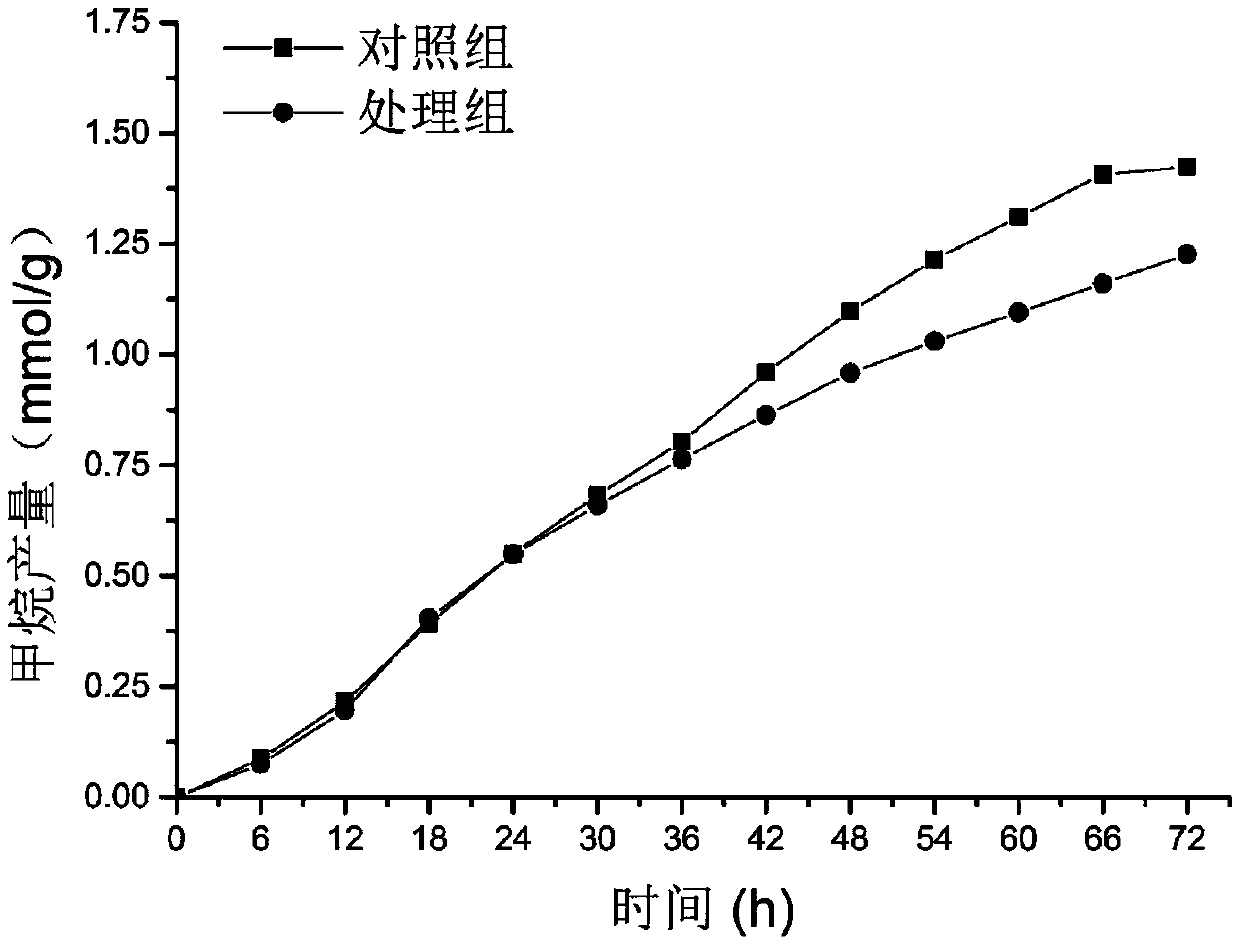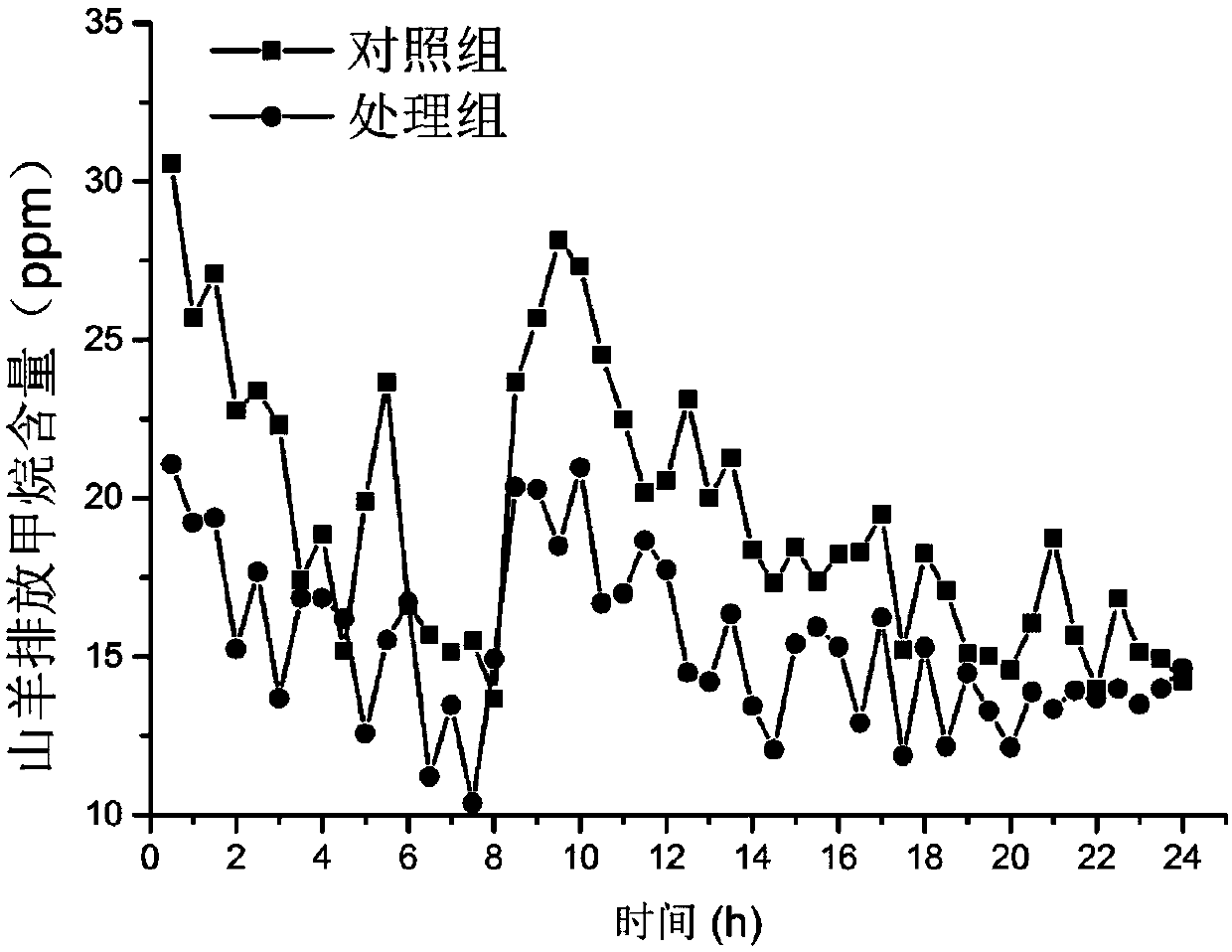Method for increasing feed value of straw and reducing methane emission from ruminant livestock
A technology for straw and livestock, applied in the application, animal husbandry, animal feed and other directions, can solve the problems of not taking into account, livestock poisoning, single purpose, etc., and achieve the effect of increasing content, reducing pollution and stable quality
- Summary
- Abstract
- Description
- Claims
- Application Information
AI Technical Summary
Problems solved by technology
Method used
Image
Examples
Embodiment 1
[0019] A method for increasing the feeding value of rice straw and reducing methane emissions from ruminant livestock, comprising the following steps:
[0020] Step 1: Air-dry the straw and cut it into 1.5-2.5 cm long straw sections with a hay cutter.
[0021] Step 2: Take 1000g of rice straw, weigh 34g of urea and 6g of ammonium nitrate, dissolve urea and ammonium nitrate in 670ml of distilled water to prepare a solution, spray evenly on the cut rice straw, stir well, and put it into a fermentation tank During the process, compact it layer by layer, tightly seal the fermenter, seal it with a parafilm, and store it at a temperature of 20-25°C.
[0022] Step 3: After storing for 28 days, take out the straw section from the fermenter, air-dry the straw section and disperse residual ammonia at the same time, and then it can be used to feed ruminant livestock.
[0023] The color of the treated rice straw is brighter than that of the untreated rice straw, and it has a paste aroma ...
PUM
 Login to View More
Login to View More Abstract
Description
Claims
Application Information
 Login to View More
Login to View More - R&D
- Intellectual Property
- Life Sciences
- Materials
- Tech Scout
- Unparalleled Data Quality
- Higher Quality Content
- 60% Fewer Hallucinations
Browse by: Latest US Patents, China's latest patents, Technical Efficacy Thesaurus, Application Domain, Technology Topic, Popular Technical Reports.
© 2025 PatSnap. All rights reserved.Legal|Privacy policy|Modern Slavery Act Transparency Statement|Sitemap|About US| Contact US: help@patsnap.com



